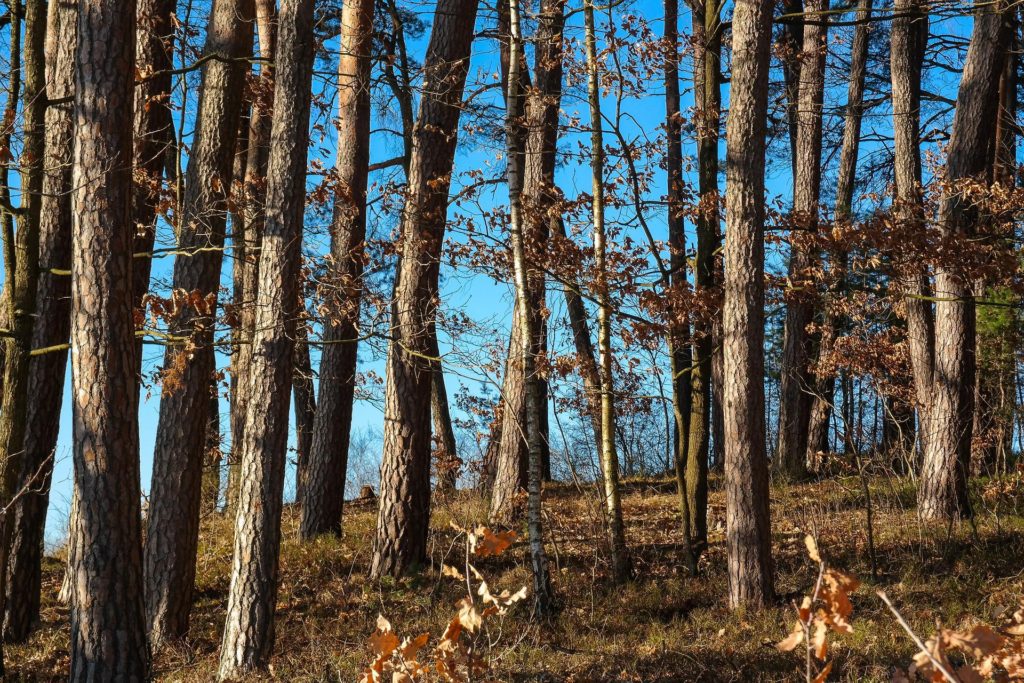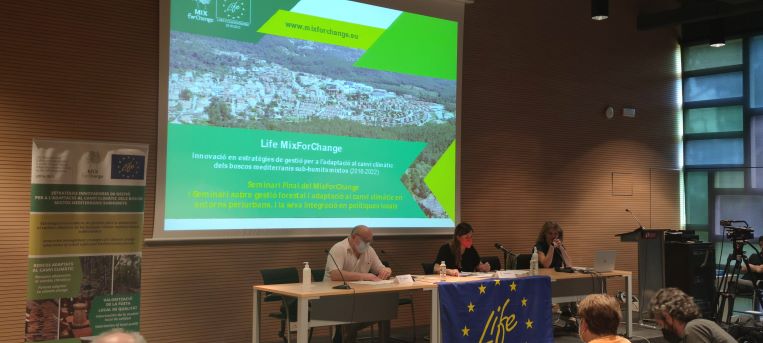The project, coordinated by CTFC researchers, implemented and transferred the effect of this silviculture in more than 200 ha of peri-urban forests, demonstrating promising environmental, social and economic results.
The final seminar of the LIFE MixForChange project, coordinated by the Forest Science and Technology Centre of Catalonia (CTFC) and with the collaboration of other entities, took place in Barcelona under the title ‘Innovation in management strategies for climate change adaptation of mixed Mediterranean forests (2016-2022)’. The main results of the project were presented, with regard to the application in peri-urban forests of a silviculture model that incorporates climate change adaptation criteria and close-to-nature principles.
The project aims to contribute to the adaptation and resilience of Mediterranean sub-humid mixed forests in the face of climate change, and to support their productive, ecological and social functions. The innovative silviculture developed within the project was applied in more than 200 ha of holm oak, chestnut, common oak and pine forests, in four different geographical areas.
The monitoring of permanent plots before and after the application of the innovative silviculture has shown a positive impact on vitality and tree growth, has reduced the vulnerability to forest fires and has improved the water balance, while maintaining floral diversity and the capacity to host biodiversity.
This silviculture approach has proven to be especially interesting for peri-urban and highly frequented forests, where society may be sensitive to higher intensity silviculture interventions. The good results regarding biodiversity conservation make this silviculture a suitable alternative and/or complement to conventional silvicultural approaches, and especially to avoid the abandonment of these forests. Forest abandonment increases their vulnerability to drought, fires, pests and diseases. Moreover, the repeated application of this silviculture is expected to progressively increase the abundance of added-value trees (promoted for valuable timber production and for conservation purposes) and reduce the management costs compared to conventional silviculture.

During the project the outcomes of this silviculture are transferred, besides further tools developed, to the main actors (forest ownership, practitioners and public administration, society in general) at regional, national and European level. In addition, several actions were implemented to promote, in the medium and long term, the adoption of adaptive and close-to-nature silviculture in new areas and forests.
Míriam Piqué, CTFC researcher and project coordinator, highlighted that this silviculture seeks to increase forest complexity and diversity, based on small-scale, detailed interventions, to achieve sustainability from the ecological (climate change adaptation, biodiversity conservation) and economic (valuable timber production) points of view, two essential requirements for its viability in the medium and long term.
The seminar ended with a panel discussion where representatives of local administrations, forest managers and owners discussed the regulatory and political challenges to facilitate and promote the management of peri-urban forests and the adoption of adaptive and multifunctional silviculture. This debate included the discussion on the “Local policies, climate change and forest management in peri-urban forests: a necessary integration”, developed during the project.
The LIFE MixForChange project has been coordinated by the Forest Science and Technology Centre of Catalonia, with the participation of the Forest Ownership Centre of Catalonia and the Forest Owners’ Associations of Montnegre-Corredor and of Bellmunt-Collsacabra, and the collaboration of Barcelona Province Council.
Last modified: 15 July 2022










